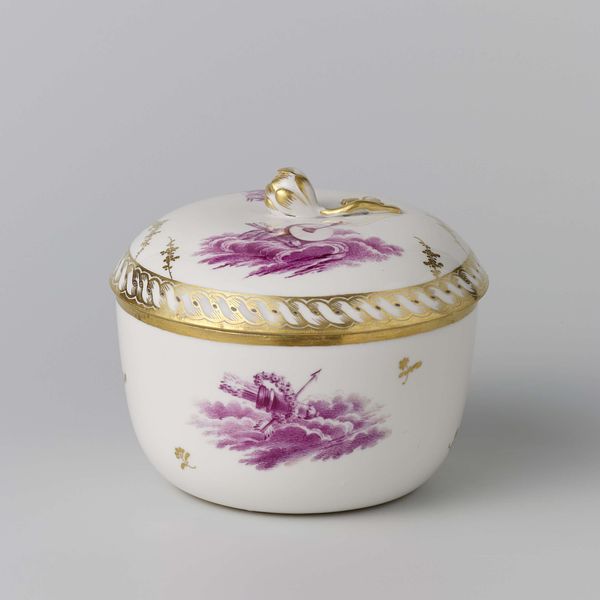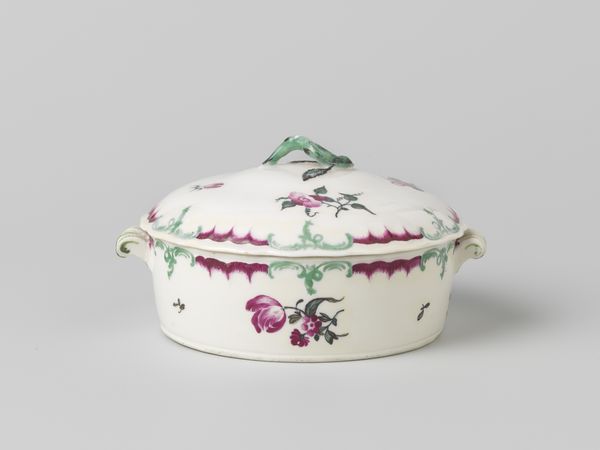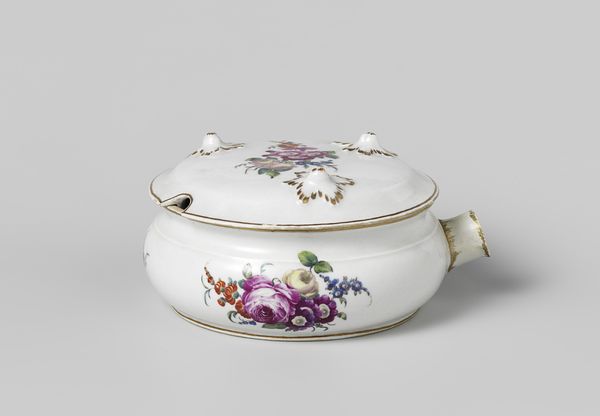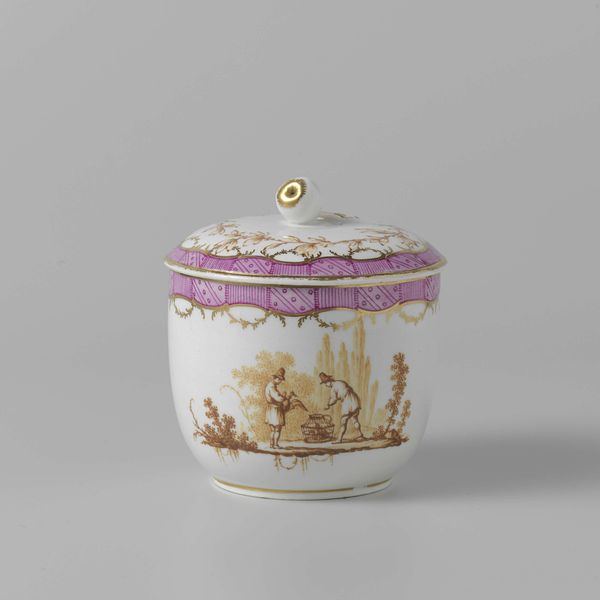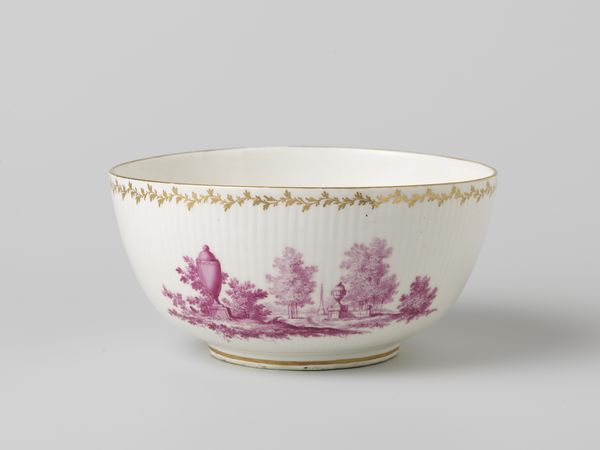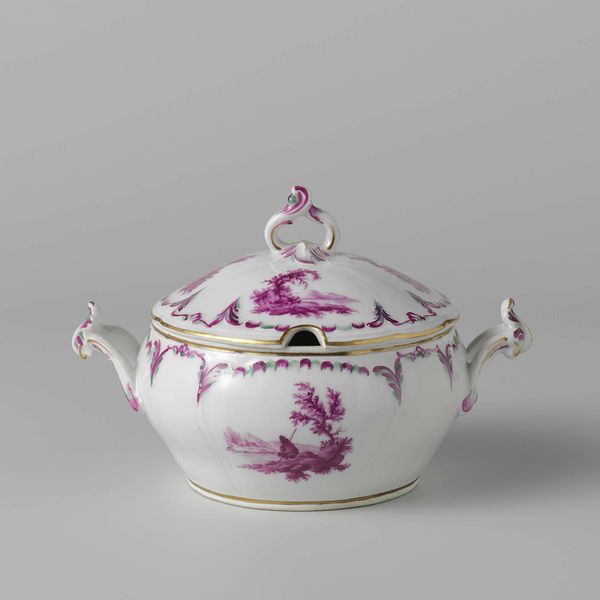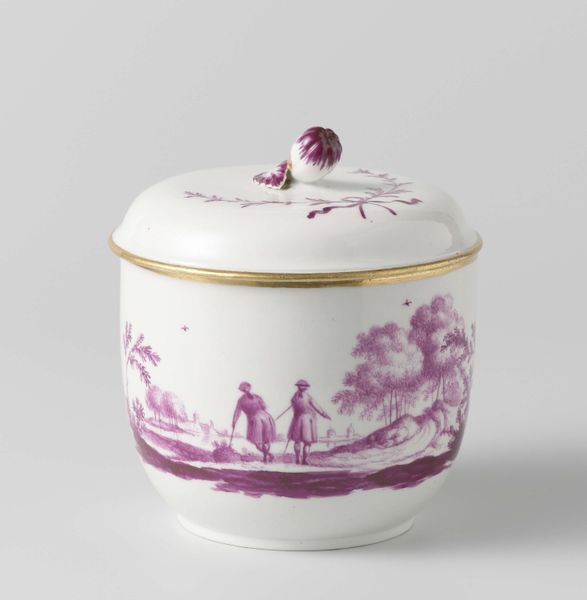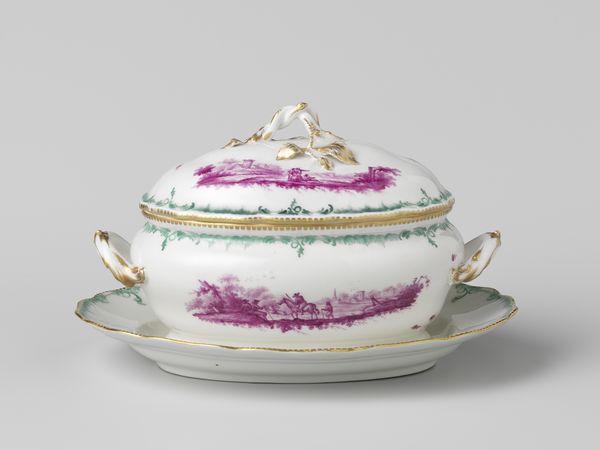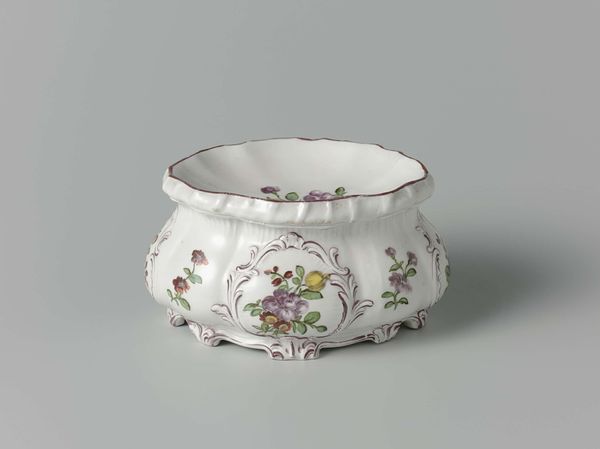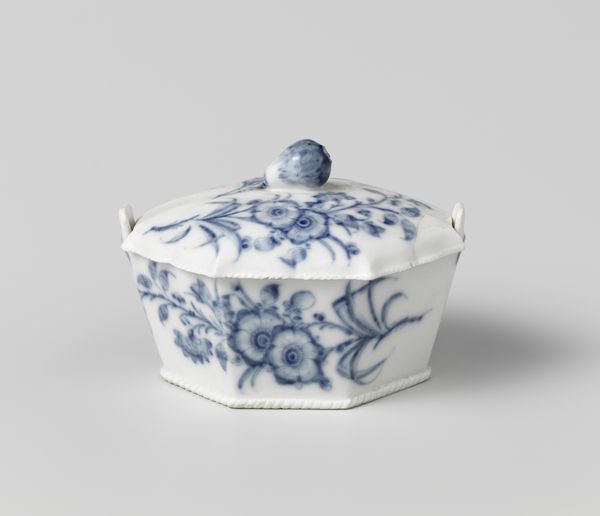
Deksel van botervloot, beschilderd met rivierlandschappen met figuren en monumenten c. 1774 - 1778
0:00
0:00
Dimensions: height 4 cm, diameter 12 cm
Copyright: Rijks Museum: Open Domain
This is the lid of a butter dish, made in Loosdrecht, Netherlands. The purple river landscapes with figures and monuments painted onto it point us to some interesting cultural and institutional contexts. The Loosdrecht porcelain factory was founded in 1774, enjoying a short, yet important period of production deeply rooted in the desire to produce luxury goods locally, rather than importing them. The imagery decorating this lid speaks to the tastes of the wealthy elites who purchased these wares. Picturesque landscapes were in vogue, reflecting a broader appreciation for the beauty and serenity of nature. But these weren't just any landscapes; they often included classical ruins or monuments, signaling the owner’s sophistication and cultural awareness. We need to ask ourselves: who was consuming these images and what did they signify? Objects like these offer a glimpse into the values and aspirations of a particular social class at a specific moment in history. Further research into the factory’s patronage and the circulation of these porcelain pieces could reveal much about the social networks and cultural capital at play.
Comments
No comments
Be the first to comment and join the conversation on the ultimate creative platform.
